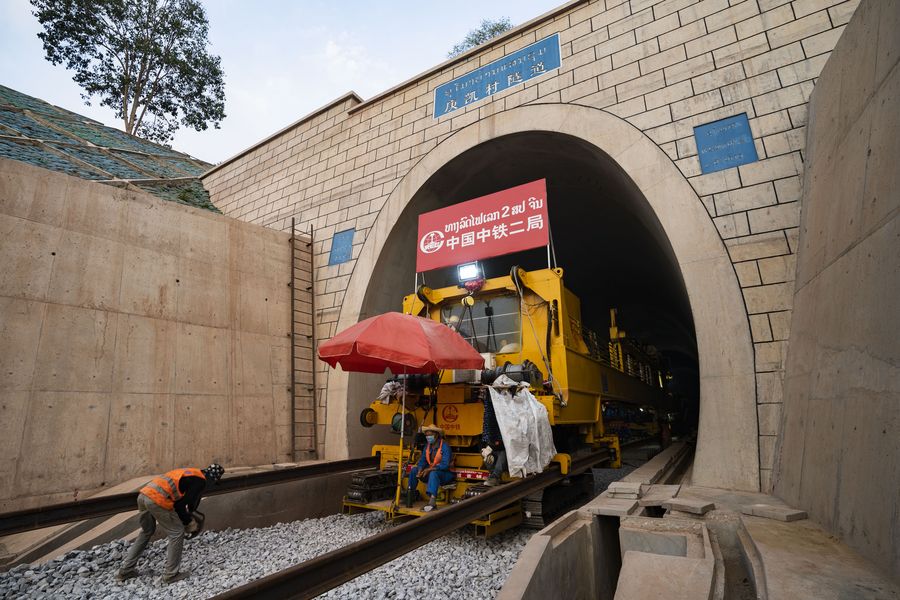1st seamless rails welded for China-Laos railway

Chinese and Lao railway builders work to lay the tracks through the Ban Nong Khay Tunnel of the China-Laos Railway in Vientiane Province, some 60 km to the north of capital Vientiane, Laos, May 23, 2020. (Photo by Kaikeo Saiyasane/Xinhua)
China Railway No. 2 Engineering Group (CREC-2) has welded the first seamless rails for the China-Laos railway in the northern suburb of Lao capital Vientiane on Thursday morning.
The seamless rail, also known as continuous welded rail (CWR) which eliminates rail joints, can improve the duration of steel rails, reduce the maintenance costs of locomotives and tracks, improve the stability and speed of trains, and enhance travel comfort.
Mobile flash contact welding technology was used in the construction of the seamless rail of the China-Laos railway.
Ren Chengneng, the CREC-2 general technical manager of the railing of the China-Laos Railway, said that the project department has overcome the difficulties of single-line operations, extreme weather and personnel shortages amid the COVID-19 pandemic, and successfully carried out the seamless rail welding to extend the China-Laos railway northward.
According to the Laos-China Railway Co., Ltd. (LCRC), a joint venture based in Vientiane in charge of the railway's construction and operation, the CREC-2 and other participating engineering units continued to speed up the construction while carrying out epidemic prevention and control measures.
Xiao Qianwen, the LCRC general manager, told Xinhua that the company has strictly implemented the epidemic prevention measures while managing the construction, which has won the praise of the Lao government.
The China-Laos Railway is a project of the China-proposed Belt and Road Initiative, with a joint effort, aiming to convert Laos from a landlocked country to a land-linked hub.
The railway, with 198-km tunnels and 62-km bridges, will run from Boten border gate in northern Laos, bordering China, to Vientiane with an operating speed of 160 km per hour.
The electrified passenger and cargo railway is built with the full application of Chinese management and technical standards.
The project started in December 2016 and is scheduled to be completed and open to traffic in December 2021.
Editor: John Li